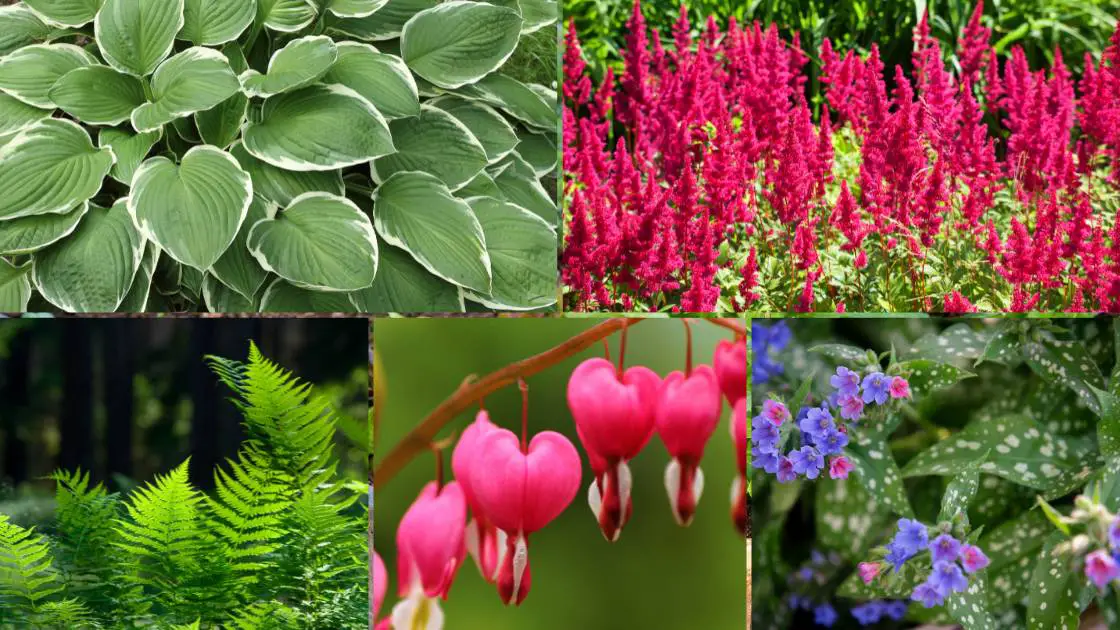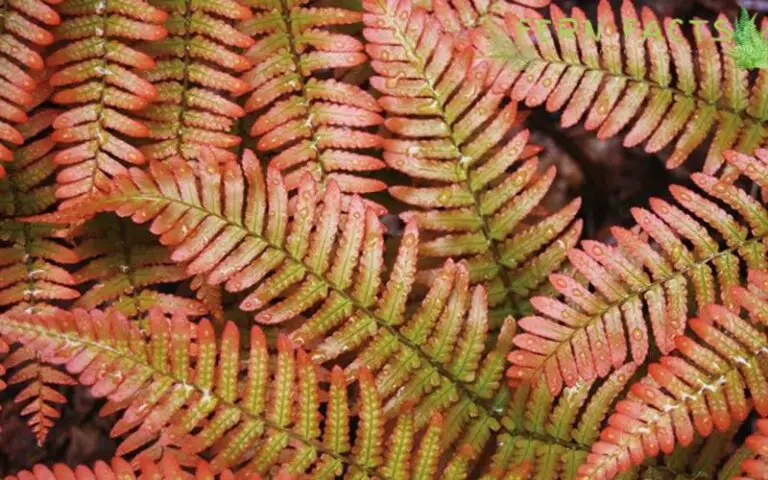5 Fast-Growing Shade Plants
Top fast-growing shade plants include hostas, ferns, and astilbes. These plants thrive in low-light conditions and enhance garden beauty.
Shade gardens with the right plant choices can be as lush and vibrant as sunny ones.
Fast-growing shade plants are perfect for filling bare spots quickly and creating a lush green sanctuary. Hostas, ferns, and astilbes are top picks for shaded areas due to their rapid growth and adaptability.
These plants grow quickly and add texture and colour to the garden. They can transform a drab, shady spot into a thriving, attractive space with minimal maintenance.
Choosing the right plants for shaded areas ensures a beautiful, low-maintenance garden that flourishes even in limited sunlight.
Top 5 Fast-growing Shade Plants
Are you searching for fast-growing plants that thrive in the shade? Look no further!
Shade-loving plants can transform dark corners into lush, green oases. Here are the top 5 fast-growing shade plants that will add beauty and life to your garden.
Hostas

Hostas are popular for their large, lush leaves and ability to thrive in shady areas. They come in various colors and sizes, making them versatile for any garden design.
- Variety: Available in green, blue, and variegated varieties.
- Growth Rate: Rapid growth, quickly filling empty spaces.
- Maintenance: Low maintenance, with minimal care required.
Hostas also produce fragrant flowers that attract pollinators, adding an extra layer of interest to your garden.
They are perfect for borders, under trees, or as ground cover. For best results, ensure they are planted in well-draining soil and watered regularly.
Astilbes
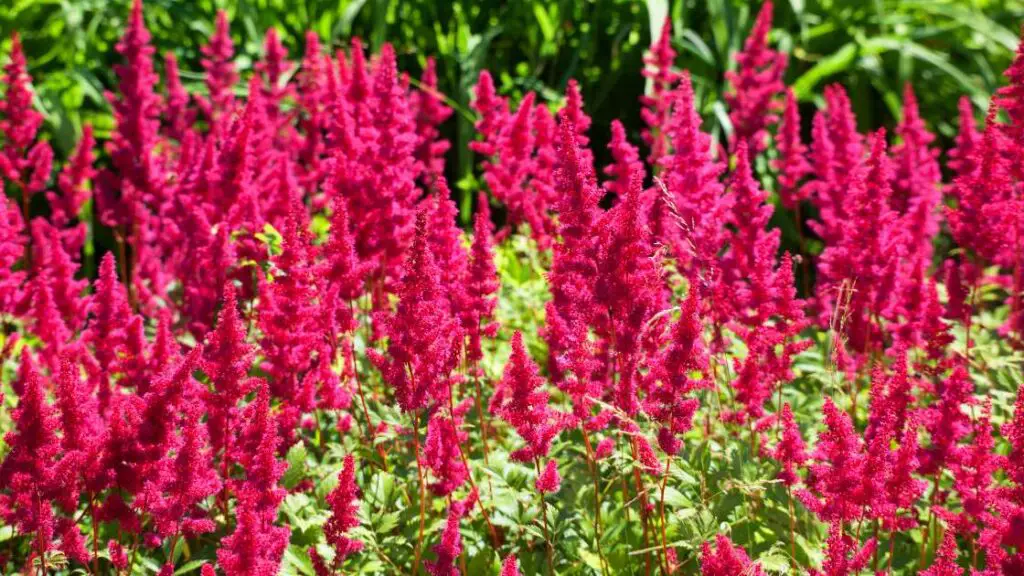
Astilbes are known for their feathery plumes of flowers and their ability to grow well in shady conditions. They are excellent for adding color and texture to your garden.
- Color Options: Pink, red, white, and purple.
- Bloom Time: Late spring to early summer.
- Water Needs: Consistent moisture is key.
Astilbes are relatively easy to care for but prefer rich, moist soil. Regular watering and a layer of mulch can help retain moisture.
These plants are ideal for shaded borders, woodland gardens, or alongside ponds and streams.
Also Read This Article: 7 Unknown Facts About Fiddle-Leaf Fig Trees
Ferns
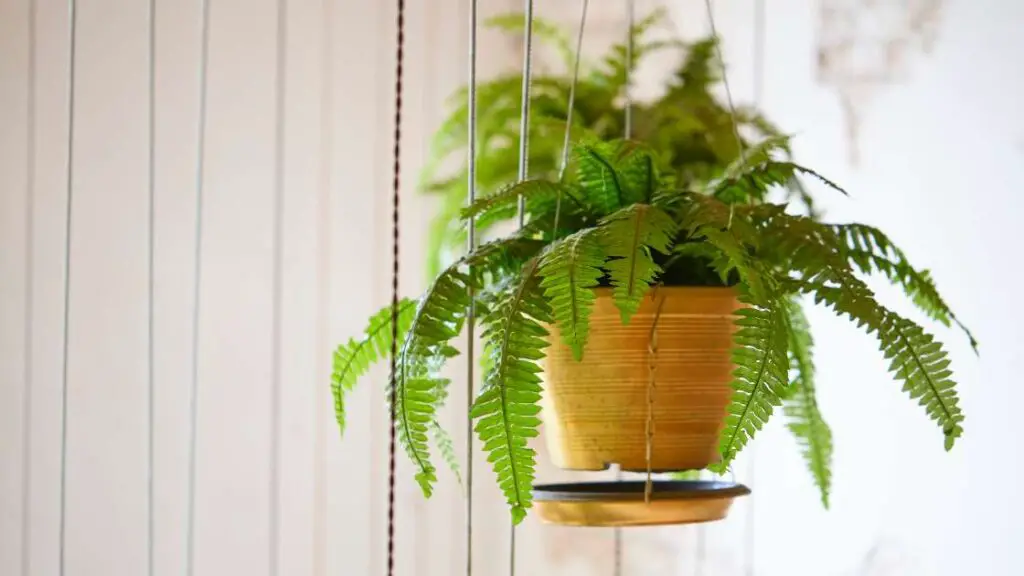
Ferns are classic shade plants with delicate fronds that add a touch of elegance. They are perfect for creating a lush, green backdrop in shaded areas.
- Types: Boston fern, maidenhair fern, and ostrich fern.
- Soil Preference: Well-draining, acidic soil.
- Light Requirements: Partial to full shade.
Ferns require minimal care once established. They thrive in humid environments and benefit from regular watering.
Use ferns to create a natural woodland feel in your garden or as a filler plant in shaded areas.
Bleeding Heart

Bleeding Heart plants are known for their heart-shaped flowers that dangle gracefully from arching stems.
They add a whimsical touch to shaded gardens.
- Flower Colors: Pink, red, and white.
- Bloom Period: Spring to early summer.
- Soil Requirements: Moist, well-draining soil.
Bleeding Hearts prefer cool, shady spots and need regular watering to moisten the soil.
These plants are excellent for adding charm to shaded borders or woodland gardens. They also make great companions to ferns and hostas.
Lungwort
Lungwort is a unique shade plant with striking foliage and clusters of small, colourful flowers. It is known for its ability to thrive in low-light conditions.
- Flower Colors: Blue, pink, and purple.
- Foliage: Spotted or variegated leaves.
- Water Needs: Consistent moisture is essential.
Lungwort is easy to grow and requires minimal maintenance. It prefers moist, well-draining soil and benefits from regular watering.
Use Lungwort to add color and interest to shady areas, or as ground cover in woodland gardens.
Benefits Of Shade Plants
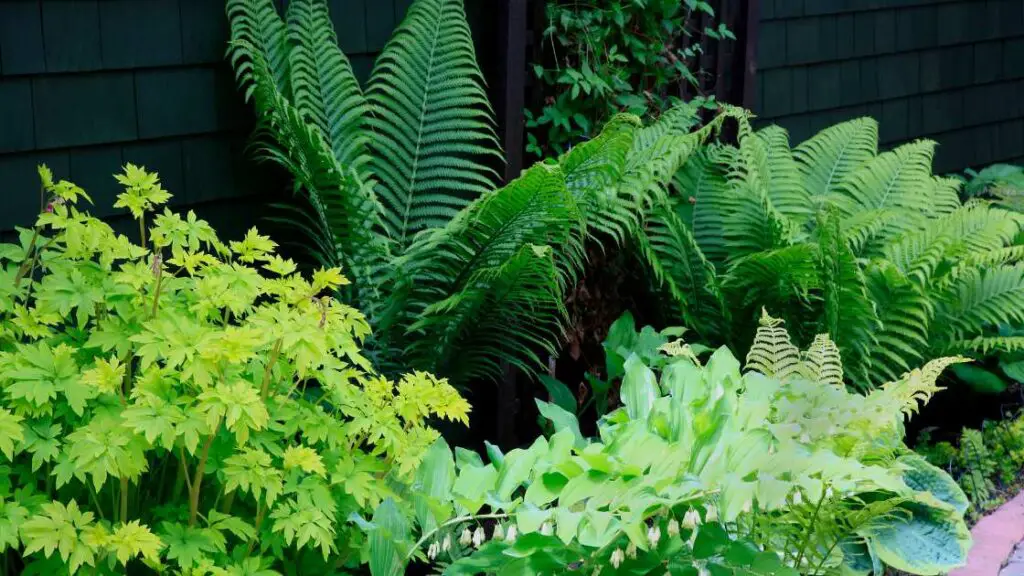
Shade plants offer numerous benefits for your garden, especially if you have areas with limited sunlight.
These plants thrive in shaded spaces and provide various advantages that enhance your outdoor environment. From boosting your home’s curb appeal to contributing to energy efficiency, shade plants are a valuable addition to any garden.
Discover the many benefits of incorporating fast-growing shade plants into your landscape.
Increased Curb Appeal
Adding shade plants can significantly boost your home’s curb appeal. These plants bring lush greenery and vibrant colors to shaded areas, transforming dull spots into attractive landscapes.
Here are some ways shade plants enhance curb appeal:
- Variety of Textures: Shade plants come in various textures, from delicate ferns to broad-leaved hostas, adding depth and interest to your garden.
- Seasonal Interest: Many shade plants bloom in different seasons, ensuring your garden looks beautiful year-round.
- Low Maintenance: Shade plants often require less water and care, making them an excellent choice for busy homeowners.
Consider these fast-growing shade plants to enhance curb appeal:
| Plant Name | Characteristics |
|---|---|
| Hosta | Large leaves, various colors |
| Ferns | Feathery fronds, easy care |
| Astilbe | Colorful plumes, shade-loving |
Energy Efficiency
Shade plants can contribute to your home’s energy efficiency. By planting trees and shrubs strategically, you can reduce heat absorption and cooling costs.
Here’s how shade plants help:
- Natural Cooling: Shade plants block sunlight from hitting your home, reducing indoor temperatures.
- Windbreaks: Dense foliage acts as a windbreak, minimizing cold drafts in winter.
- Reduced Watering: Shaded areas retain moisture better, reducing the need for frequent watering.
Planting fast-growing shade trees and shrubs around your home can make a significant difference. Here are some recommendations:
| Plant Name | Benefits |
|---|---|
| Maple Trees | Fast growth, excellent shade |
| American Holly | Evergreen, windbreak |
| Redbud | Spring blooms, moderate shade |
Incorporating these plants around your home enhances aesthetics and contributes to a more energy-efficient and eco-friendly living space.
Selecting The Right Shade Plants
Selecting the right shade plants is crucial to creating a lush and vibrant garden. Some plants thrive without direct sunlight, making them perfect for shady areas.
Discover the best fast-growing shade plants to transform your garden into a green oasis.
Consider Light Conditions
Understanding your garden’s light conditions is key to choosing the right shade plants. Not all shade is the same, and different plants need different amounts of light.
There are three main types of shade:
- Full Shade: No direct sunlight reaches the area.
- Partial Shade: The area gets 3-6 hours of direct sunlight daily.
- Dappled Shade: Sunlight filters through trees, creating spots of light.
Evaluate your garden to determine the type of shade it has. Plants like Histas and Ferns thrive in full shade, while Astilbes and Heucheras prefer partial shade.
Check plant labels or consult a gardening expert to match plants with the right light conditions.
Choose Low-maintenance Varieties
Low-maintenance shade plants save time and effort. These plants grow well with minimal care, making them perfect for busy gardeners.
Consider the following low-maintenance shade plants:
- Hostas: Known for their lush foliage, Hostas require little attention.
- Heucheras: These colorful plants add brightness to shaded areas and need minimal care.
- Ferns: Hardy and resilient, ferns thrive in shady spots with little maintenance.
Low-maintenance plants also resist pests and diseases better than high-maintenance varieties. Select plants that grow well in your climate and soil conditions for the best results. Choosing the right shade plants involves understanding light conditions and opting for low-maintenance varieties.
Best Practices For Planting Shade Plants
Planting shade plants can bring life to the darker corners of your garden. These plants thrive in low light and add lush greenery and vibrant colors.
Understanding the best practices for planting shade plants ensures they grow healthy and fast.
Let’s delve into the essential steps to guarantee your shade plants flourish.
Preparing The Soil
Proper soil preparation is crucial for the success of shade plants. These plants often require well-drained, nutrient-rich soil to thrive. Follow these steps to prepare the soil effectively:
- Test the Soil: Use a soil testing kit to check the pH level. Most shade plants prefer a pH between 6.0 and 7.0.
- Amend the Soil: Add organic matter like compost or well-rotted manure to improve soil structure and nutrient content. Aim for 2-3 inches of organic matter.
- Ensure Drainage: Mix in sand or perlite if the soil is heavy clay to improve drainage. Poor drainage can lead to root rot.
Here’s a quick reference table to help you prepare the soil:
| Step | Description |
|---|---|
| Test the Soil | Check pH and nutrient levels |
| Amend the Soil | Add compost or manure |
| Ensure Drainage | Mix in sand or perlite |
Proper Watering Techniques
Watering shade plants correctly is essential for their growth. Shade plants typically require less water than sun-loving plants. Follow these guidelines to ensure proper watering:
- Check Soil Moisture: Always check the soil moisture before watering. Stick your finger about an inch into the soil. If it feels dry, it’s time to water.
- Water Deeply: Instead of frequent shallow watering, water deeply to encourage deep root growth. Deep roots make plants more drought-tolerant.
- Use Mulch: Apply a 2-3 inch layer of mulch around the plants. Mulch helps retain soil moisture and keeps roots cool.
- Water in the Morning: Watering in the morning allows plants to absorb moisture before the heat of the day. It also reduces the risk of fungal diseases.
Here’s a handy checklist for proper watering:
- Check soil moisture before watering.
- Water deeply, not frequently.
- Use mulch to retain moisture.
- Water in the morning to prevent diseases.
By following these watering techniques, your shade plants will stay healthy and vibrant.
Caring For Fast-growing Shade Plants
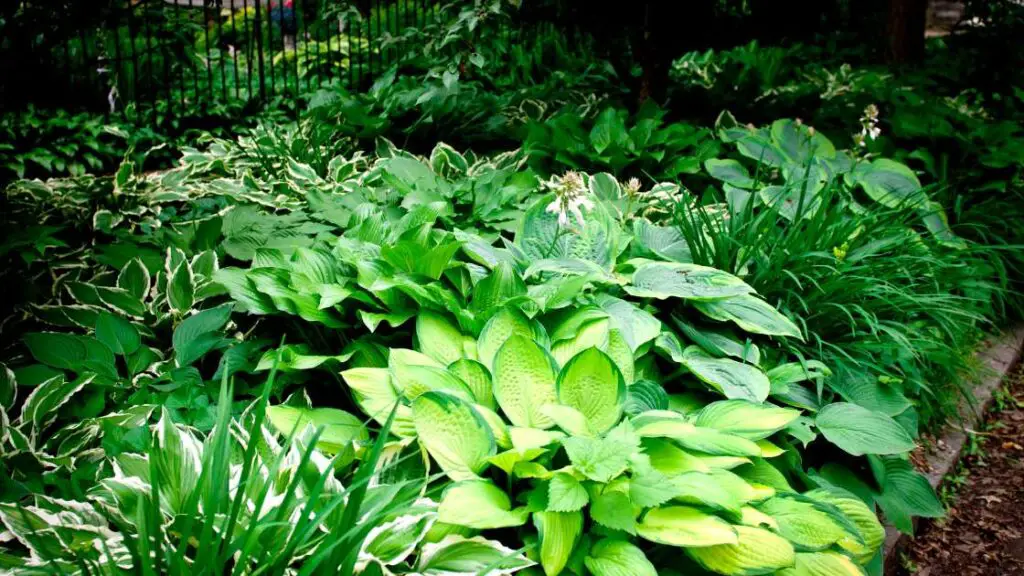
Fast-growing shade plants are perfect for filling those shady spots in your garden quickly. These plants not only provide lush greenery but also require specific care to thrive.
Caring for fast-growing shade plants involves proper fertilization, pruning, and maintenance to ensure they remain healthy and vibrant.
Below, we dive into essential tips for keeping your shade plants in top shape.
Fertilization Tips
Proper fertilization is crucial for the healthy growth of fast-growing shade plants. These plants often need more nutrients to support their rapid growth.
Follow these tips to keep your plants well-nourished:
- Use organic fertilizers: Organic options like compost or well-rotted manure provide slow-release nutrients.
- Apply balanced fertilizers: Choose fertilizers with a balanced ratio of nitrogen, phosphorus, and potassium (N-P-K).
- Seasonal feeding: Fertilize in early spring and late summer to support growth and recovery.
- Water-soluble options: Use water-soluble fertilizers for a quick nutrient boost.
For a more detailed fertilization schedule, refer to the table below:
| Season | Fertilizer Type | Application Frequency |
|---|---|---|
| Spring | Balanced N-P-K | Once a month |
| Summer | Organic compost | Every 6 weeks |
| Fall | Water-soluble | Every 4 weeks |
Always follow the manufacturer’s instructions for the best results. Over-fertilizing can harm your plants, so less is often more.
Pruning And Maintenance
Pruning and maintenance are essential to keep your fast-growing shade plants healthy and manageable. Regular care prevents overgrowth and promotes new growth. Here are some key tips:
- Regular pruning: Trim back overgrown branches to maintain shape and size.
- Remove dead leaves: Clear away dead or diseased leaves to prevent infection.
- Inspect for pests: Check regularly for signs of pests and treat them promptly.
- Watering: Ensure consistent moisture without waterlogging the soil.
For a more organized approach, consider the following maintenance schedule:
| Task | Frequency |
|---|---|
| Pruning | Every 6-8 weeks |
| Dead leaf removal | Monthly |
| Pest inspection | Bi-weekly |
| Watering | As needed |
By following these tips and schedules, your shade plants will thrive and beautify your garden year-round.
Dealing With Common Shade Plant Issues
Fast-growing shade plants can transform your garden into a lush, green oasis. These plants thrive without direct sunlight and can fill bare spots quickly.
However, they can face issues like pests and diseases. Dealing with these problems ensures your shade garden remains healthy and vibrant.
Pest Control
Pests can wreak havoc on your shade plants. Common pests include aphids, slugs, and spider mites. Proper pest control can save your plants from damage.
Here are some effective pest control methods:
- Neem Oil: Neem oil is organic and safe. Spray it on your plants to deter pests.
- Beneficial Insects: Ladybugs and lacewings eat aphids and other harmful insects.
- Handpicking: For larger pests like slugs, handpicking can be effective. Use gloves and a bucket.
- Natural Predators: Birds and frogs can help control pest populations.
Here is a table summarizing common pests and their control methods:
| Pest | Control Method |
|---|---|
| Aphids | Neem oil, ladybugs |
| Slugs | Handpicking, natural predators |
| Spider Mites | Neem oil, lacewings |
Disease Prevention
Shade plants can be prone to diseases like powdery mildew and root rot. Preventing these diseases keeps your garden healthy.
Here are some tips for disease prevention:
- Proper Spacing: Ensure plants have enough space for air circulation. This reduces fungal growth.
- Watering Techniques: Water the soil, not the leaves. Wet leaves can lead to fungal diseases.
- Healthy Soil: Use well-draining soil. Poorly draining soil can cause root rot.
- Remove Infected Plants: If a plant shows signs of disease, remove it immediately. This prevents the spread of healthy plants.
Here is a table listing common diseases and prevention methods:
| Disease | Prevention Method |
|---|---|
| Powdery Mildew | Proper spacing, water the soil |
| Root Rot | Well-draining soil, remove infected plants |
| Leaf Spot | Water the soil, remove infected plants |
Incorporating Shade Plants Into Landscape Design
Are you looking to add lush greenery to your shaded areas? Shade plants can transform any shady spot into a vibrant oasis.
These fast-growing plants not only thrive in low light but also bring various textures and colors to your landscape. Incorporating shade plants into your landscape design can create a serene and beautiful environment.
Creating Visual Interest
Adding shade plants can significantly enhance the visual appeal of your garden. You can create stunning focal points and depth by carefully selecting and positioning these plants.
Here are some ways to create visual interest with shade plants:
- Layering: Plant taller species at the back and shorter ones in front to create depth.
- Contrasting Shapes: Use plants with different leaf shapes and sizes to add variety.
- Highlighting Pathways: Line garden paths with shade plants to guide the eye and add interest.
Consider these combinations for a captivating look:
| Plant Combination | Visual Effect |
|---|---|
| Ferns and Hostas | Delicate fronds with broad leaves |
| Astilbes and Heucheras | Feathery plumes with ruffled foliage |
| Impatiens and Caladiums | Bright blooms with colorful leaves |
Combining plant heights, shapes, and positions can make your garden a visual masterpiece.
Mixing Textures And Colors
Combining different textures and colors can elevate the beauty of your shade garden. Plants with varied textures add dimension and intrigue while contrasting colours can make the space pop.
Here’s how you can mix textures and colors effectively:
- Choose Plants with Unique Textures: For a tactile experience, combine smooth, glossy leaves with rough, fuzzy ones.
- Play with Color Schemes: Select plants with complementary or contrasting colors to create visual harmony or drama.
- Incorporate Seasonal Blooms: Use plants that bloom at different times to ensure continuous color throughout the year.
Here are some examples of texture and color combinations:
| Plant Pairing | Texture and Color Contrast |
|---|---|
| Japanese Painted Fern and Coral Bells | Silvery fronds with dark purple leaves |
| Brunnera and Pulmonaria | Heart-shaped leaves with spotted foliage |
| Foamflower and Lungwort | Delicate flowers with speckled leaves |
Mixing different textures and colors can transform a simple shaded area into a dynamic and engaging space.
Conclusion And Final Tips
Growing shade plants can transform your garden into a serene, green haven. Fast-growing shade plants are perfect for quickly creating this tranquil space.
Here are some final tips to ensure your garden flourishes with these plants.
Long-term Planning
Planning is essential for a thriving garden. To avoid overcrowding, consider each plant’s mature size. Overcrowded plants compete for nutrients and light.
Here are some tips for long-term planning:
- Select plants that thrive in your climate and soil type.
- Group plants with similar water and light needs.
- Use a garden planner or design software to visualize your garden.
A well-thought-out layout minimizes maintenance. It ensures each plant has enough room to grow. Regularly prune to control growth and maintain shape.
Here’s a table of some fast-growing shade plants and their mature sizes:
| Plant | Mature Size |
|---|---|
| Hosta | 2-3 feet |
| Ferns | 1-3 feet |
| Astilbe | 2-4 feet |
Plant taller species at the back and shorter ones at the front. This arrangement ensures that each plant gets adequate light.
Enjoying A Lush Shade Garden
With careful selection and planning, you will enjoy a lush garden. To make your garden visually appealing, add a variety of textures and colors.
Here are some ideas to enjoy your shade garden:
- Incorporate seating areas to relax and enjoy the greenery.
- Add garden ornaments like statues or birdbaths for added interest.
- Install pathways to navigate through your garden easily.
Use mulch to retain moisture and suppress weeds. Mulching also adds a neat appearance to your garden.
Regular watering and fertilizing ensure healthy growth. Shade plants may need less water than sun-loving plants but still require consistent care.
Here’s a list of some colorful fast-growing shade plants:
- Impatiens – Bright blooms in various colors.
- Coleus – Vibrant foliage in shades of red, purple, and yellow.
- Heuchera – Colorful leaves ranging from green to deep burgundy.
Enjoy the tranquillity and beauty of your shade garden. Regular maintenance and care will keep it lush and vibrant for years to come.
:max_bytes(150000):strip_icc()/vegetables-thrive-in-shade-lead2-getty-0723-887d71d001a84e62b74c6b3b98db4f2f.jpg)
Frequently Asked Questions
What Are Some Fast-growing Shade Plants?
Fast-growing shade plants include Hostas, Ferns, and Astilbes. These plants thrive in low light and quickly add lush greenery.
Can Ferns Grow In Full Shade?
Yes, ferns grow well in full shade. They prefer moist soil. Ferns are ideal for shady garden spots.
Which Shade Plants Are Low Maintenance?
Hostas and Heucheras are low maintenance. They require minimal care. Both plants are perfect for busy gardeners.
Do Shade Plants Need Special Soil?
Shade plants prefer well-draining, rich soil. Adding compost can improve soil quality, helping plants grow better.
Conclusion
Choosing the right shade plants can transform your garden. These 5 fast-growing options offer beauty and practicality. Enjoy a lush, vibrant space with minimal effort. Shade plants enhance aesthetics and require less maintenance. Start planting today and watch your garden flourish.
Happy gardening!

